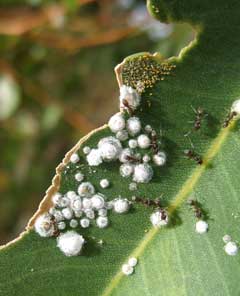The Draft Management Plan for Trigg Bushland closed for public comment on 31st October. Download our comments here.
Members of the Friends of Trigg Bushland jointly wrote an in-depth issues paper which was put to the City of Stirling at an early stage of the plan preparation process. We are very pleased that the City has taken into account a great many of our suggestions. As a result, the proposed Management Plan is, in our view and with the exceptions noted in our comments, a sound plan for the medium term future of Trigg Bushland and most of Bush Forever Site 308.
Of particular importance is the recommendation that Trigg Bushland be RETURNED to its pre-1996 designation as a ‘dogs-on-lead’ area. This has been necessary in Star Swamp because of the damage to quenda and other species, which are also resident in Trigg Bushland. With urban infill there is simply too much pressure on urban bushland, and faeces from uncontrolled dogs is becoming very prevalent – it is unsightly, smells very strong on warm days, provides nutrients to weeds, can kill delicate native plants with too much nutrients, and can spread diseases to other dogs!
———————————-
In 1991 the City of Stirling adopted a management plan for the bushland. The City’s ongoing program includes the rehabilitation of vegetation, erosion and weed control, upgrading tracks to improve fire management and public access, and maintaining fences and signs.
Seed collected from the reserve is used to re-establish some native species that have declined as a result of fire, erosion or grazing by rabbits. In areas susceptible to erosion, such as the tops and sides of steep dunes, the placement of protective barriers or layers of brushwood helps plants to regenerate.
Fires threaten the survival of many plant and animal species. The early detection of fire depends upon local residents keeping an eye on the bush and any suspicious activities. It is vital to the protection of tuart trees that fires occur no more often than approx 15 years so that new generations of seedlings can mature and develop fire tolerance.

Armillaria
Pelargonium, veldt grass, lupin, carnation weed and bridal creeper are some of the weeds that seriously compete with native plants, especially orchids, and are difficult to control. The illegal dumping of garden rubbish aggravates the problem. Exotic plants, as well as Australian plants that would not naturally occur here (e.g. Geraldton wax) are gradually being removed.
A root-rotting fungus (Armillaria luteobubalina) is present in some areas and is facilitated by the drainage of street wastewater into the reserve. This fungus causes severe damage to vegetation, and is believed to be responsible for the death of many trees. Developments in its control are awaited.
HOW YOU CAN HELP
Community action was largely responsible for placing Trigg Bushland on the Register of the National Estate in 1987 and for its upgrading from a Class C to a Class A reserve in 1989. Local residents and users of the reserve can help preserve the area’s heritage by:
Ants and Lerp on tuart leaf
• joining the Friends group
• observing and learning about the bushland
• keeping to designated paths and off fragile areas
• reporting misuse or vandalism
• reporting fires immediately (dial 000)
• picking up all dog droppings and placing them in a bin
• ensuring your cat is kept out of the bushland at all times
Trigg Bushland belongs to you. Share in the responsibilities as well as the pleasures.
WEEDS AND TRIGG BUSHLAND
Local residents and users of the reserve can continue to preserve the integrity of this magnificent piece of bush, which is one of the few large reserves in the inner suburbs of Perth. However, being in a populated area it is constantly under siege from invasive weeds, which threaten the diversity of native flora – and could, in fact, completely take over the bush!
Everyone can help preserve Trigg Bushland. Spread the word, not the weeds! What we do in our own backyards can have a big influence on what happens in the bush. Here are a few hints:
Tuart blossom
• Select carefully from nurseries the plants you put in the garden
• Dispose of garden refuse responsibly. Never dump it in the bush!
• Never put your grass clippings on the verge along Trigg Bushland.
• Reduce disturbance in the bush – keep to the path
• Discourage children from digging in the bush
• Watch out for the bush – notify the City of Stirling Council or Friends of Trigg Bushland of any misuse or vandalism
• Report fires immediately (dial 000)
• Learn more about Trigg Bushland – attend the free guided walk held the fifth Saturday of the month (four times a year). Meet at 8am in front of St Mary’s School. Check the events page for details.
• Join the Friends of Trigg Bushland!
Remember that you can do a lot just by passing on information within your circle of influence.





Recent Comments